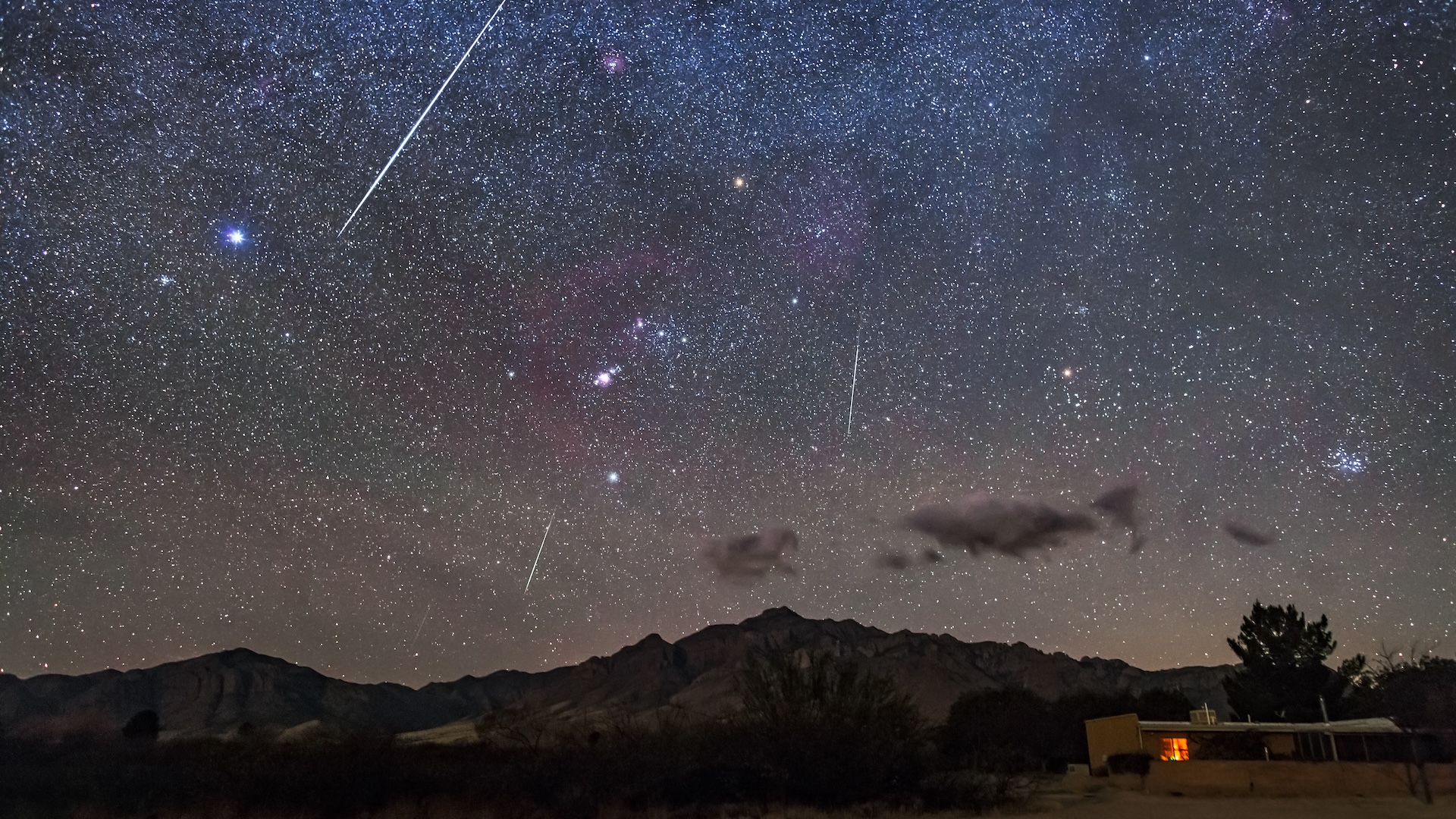The first meteor shower of spring in the Northern Hemisphere, the Lyrids, will peak overnight on April 21-22. This year, the annual meteor shower will peak in virtually moonless night skies, which should make for a great show.
According to the American Meteor Society, around 18 “shooting stars” per hour could be visible during the height of the shower. However, with the peak set to occur in daylight in North America and a waning moon rising as a crescent after midnight on April 21, the best time to look — if skies are clear — will be immediately after it gets dark.
The Lyrids are caused by detritus left in the inner solar system by Comet Thatcher (C/1861 G1). That name denotes the year the comet was discovered, according to NASA. In fact, it was discovered on its last visit to the inner solar system, in 1861. Comet Thatcher orbits the sun every 422 Earth years, with its next visit due in 2283.
Although Lyrids can occur anywhere in the night sky, they’re named after the constellation Lyra, because that’s where they appear to originate. Astronomers call this the radiant point of a meteor shower. Lyra, which contains the bright star Vega, can be seen rising in the east as it gets dark.
Related: The 10 best stargazing events of 2025
Active from April 16-25, the Lyrid meteor shower can produce particularly bright “shooting stars” known as fireballs, which makes it one of the best meteor showers to photograph. An easy way to photograph a meteor shower on a manual camera is to set it on a tripod and take exposures of about 20 to 30 seconds, using a low f-number and an ISO of between 800 and3200. (ISO 1600 is a good starting point.) Then, set it to take shot after shot on its own. Hopefully, one of them will include a shooting “star,” which is actually the light produced by a meteoroid as it burns up in Earth’s atmosphere.
As the Lyrids wane, another meteor shower will begin. That one will be best seen from the Southern Hemisphere. Active from April 19 to May 28, the Eta Aquarid meteor shower is set to peak on May 4-5. The Eta Aquarids appear to come from the constellation Aquarius, but the source is actually Halley’s Comet. During the shower’s peak, about 60 shooting stars can be seen from the Southern Hemisphere, with the Northern Hemisphere typically experiencing about 30 per hour.
